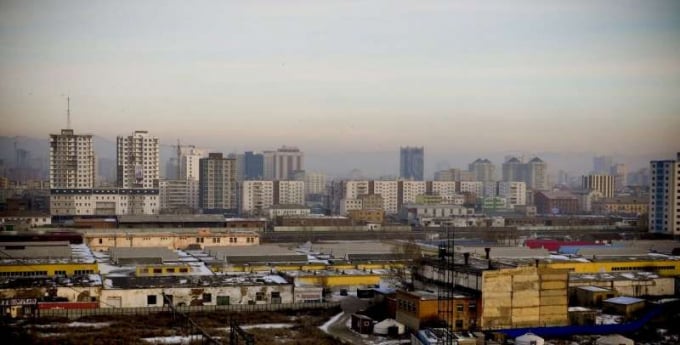June 19, 2025 | 21:27 GMT +7
June 19, 2025 | 21:27 GMT +7
Hotline: 0913.378.918
June 19, 2025 | 21:27 GMT +7
Hotline: 0913.378.918

The chemicals at issue—called aromatics and intermediate- and semi-volatile organic compounds—are emitted from tailpipes and cooking fuels like wood and charcoal, and increasingly also from industrial solvents, house paints, cleaning products and other chemicals. Photo: Public Domain
and gases from vehicle tailpipes, according to a new CU Boulder-led study.
The new work, led by former CIRES postdoctoral researcher Benjamin Nault and CIRES Fellow Jose-Luis Jimenez, calculated that air pollution caused by "anthropogenic secondary organic aerosol" causes 340,000-900,000 premature deaths. Those are tiny particles in the atmosphere that form from chemicals emittedby human activities.
And "that's more than 10 times as many deaths as previously estimated," said Nault, who is now a scientist at Aerodyne Research, Inc. His work, published today in Atmospheric Chemistry and Physics, builds on findings by CU Boulder, NOAA, NASA, and others that emissions from everyday products are increasingly important in forming pollutants in urban air.
"The older idea was that to reduce premature mortality, you should target coal-fired power plants or the transportation sector," Nault said. "Yes, these are important, but we're showing that if you're not getting at the cleaning and painting products and other everyday chemicals, then you're not getting at a major source."
Atmospheric researchers have long understood that particles in the atmosphere small enough to be inhaled can damage people's lungs and increase mortality. Studies have estimated that fine particle pollution, often called PM2.5, leads to 3-4 million premature deaths globally per year, possibly more.
Many countries, including the United States, therefore have laws limiting how many of those particles get into the atmosphere. We regulate soot from power plants and diesel exhaust, for example, which are "direct" sources of particulate matter. And regulations also target fossil fuel emissions of sulfur and nitrogen oxides, which can react in the atmosphere to form fine particles—an indirect, "secondary inorganic" source of particles.
The new work suggests that a third broad category of chemicals—anthropogenic secondary organic pollutants—is a significant indirect source of deadly fine particles.
To determine the mortality impact of several sources of fine particles, the team dug into data from 11 comprehensive air quality studies carried out in cities around the world in the last two decades. They drew on detailed databases of chemical emissions from cities including Beijing, London and New York City, and they ran those numbers through sophisticated air quality models that also incorporate satellite data.
They found that the production of secondary organic aerosol in those 11 cities was strongly correlated with specific organic compounds emitted by people's activities. The chemicals at issue—called aromatics and intermediate- and semi-volatile organic compounds—are emitted from tailpipes and cooking fuels like wood and charcoal, and increasingly also from industrial solvents, house paints, cleaning products and other chemicals.
In previous work in Los Angeles, CIRES, NOAA and other scientists have reported that such volatile chemical products contribute as much as vehicles do to the formation of particle pollution. "What's new here," said co-author Brian McDonald, a NOAA scientist, "is that we are showing this is an issue in cities on three continents, North America, Europe and east Asia."
Air quality regulations have tended to focus on volatile chemicals that produce ozone, another hazardous pollutant, said Jimenez, who is also a professor of chemistry at CU Boulder. But it is increasingly clear, most recently from the new work, that chemicals which contribute little to ozone formation may still contribute seriously to particle formation.
"Because this effect has been thought to be small, it hasn't been targeted for control," Jimenez said. "But when you take the atmospheric chemistry into account and put it into a model, you find that this particular source is killing a lot of people."
Nault and Jimenez said they hope to expand their work to include more urban areas of the world, where there haven't been enough measurements yet to confirm that volatile chemical products contribute substantially to fine particles. But the trend is holding so far in all places where there are enough measurements.
"If you care about air pollution impacts on health and mortality, you have to take this problem seriously," Jimenez concluded.
(Phys.org)

(VAN) Poultry production in Poland, which has only started recovering from devastating bird flu outbreaks earlier this year, has been hit by a series of outbreaks of Newcastle disease, with the veterinary situation deteriorating rapidly.

(VAN) Extensive licensing requirements raise concerns about intellectual property theft.

(VAN) As of Friday, a salmonella outbreak linked to a California egg producer had sickened at least 79 people. Of the infected people, 21 hospitalizations were reported, U.S. health officials said.

(VAN) With the war ongoing, many Ukrainian farmers and rural farming families face limited access to their land due to mines and lack the financial resources to purchase needed agricultural inputs.

(VAN) Vikas Rambal has quietly built a $5 billion business empire in manufacturing, property and solar, and catapulted onto the Rich List.

(VAN) Available cropland now at less than five percent, according to latest geospatial assessment from FAO and UNOSAT.

(VAN) Alt Carbon has raised $12 million in a seed round as it plans to scale its carbon dioxide removal work in the South Asian nation.